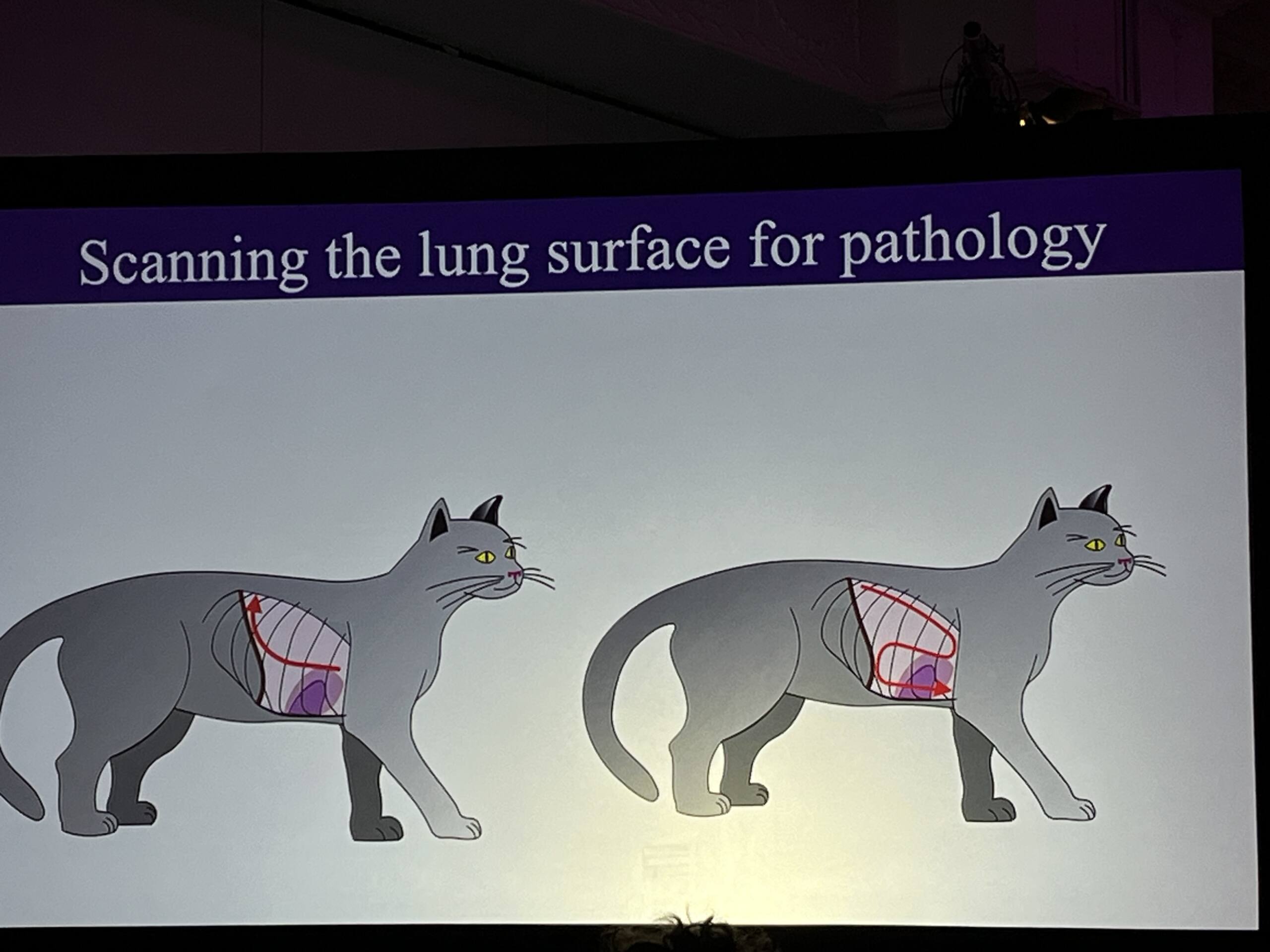In July this year Carolyn travelled to Dublin to attend the annual highlight of the feline vet calendar, the ISFM Feline Vet Congress. This year the focus of the congress was Acute Upper Urinary Tract Disease, including Ureteral Obstruction often leading to Acute Kidney Injury (AKI). The Ureters are each a long outflow tube running from the kidney to the bladder and can become blocked by urinary stones (a clump of urinary crystals which abnormally form in some cats’ urine). AKI is often difficult to detect quickly, as it only becomes obvious on blood-lab work when >75% renal function is lost! If suspected though, the need for repeated blood sampling, watching the trend of an individual’s renal parameters can be useful. Monitoring urine output is useful too, though it does require hospitalisation.
There was also a useful focus on Pocus(!) – which stands for ‘Point of Care Ultrasound’ for immediate use in the acutely presenting patient. If the kidney cortex is measured carefully, for abnormal enlargement, this can be a useful indication of Ureteral obstruction, as the urine builds up in front of any blockage. Overall kidney enlargement is also useful when assessed on scans and/or X-rays, and can back-up a suspicion of ureteral blockage.
POCUS ultrasound in all acute cases was also highlighted as an invaluable way of assessing the severity of an acutely ill cat, and in assisting a speedy diagnosis and optimal treatment. We were shown useful images of acutely unwell cats’ chests with fluid build-up outside the lungs (pulmonary effusions) and inside the lungs (pulmonary oedema), often in relation to heart failure, but also from trauma (eg. when hit by a car). The feline abdomen has several sites where commonly ‘free fluid’ will show up on a scan too, in relation to many acute and some chronic disease processes. This ‘free fluid’ can often be sampled using a fine needle – ‘free fluid’ after trauma being usually blood from a damaged vessel or organ, or serous fluid that has leaked out of the gut or blood vessels over a long period in several chronic diseases, eg, a gut tumour. Urine leaking from a rupture somewhere in the urinary tract eg. bladder or urethra, can also be detected in this way using a fine needle.
In dealing with AKI and other acute unwell cats on presentation we learned that the Dorsal Pedal Pulse is more sensitive than the traditional Femoral Pulse – it will become imperceptible well before the loss of the femoral pulse, so can be a useful indicator of serious ‘shock’/serious illness sooner, allowing faster triage/appropriate treatment.
There was also some updated information regarding Feline Urinary Stones and Crystalluria in general, affecting the Lower Urinary Tract. Struvite crystals or stones, which can be dissolved on the correct (acidic) diet are commonest in younger males and overweight female cats. These acidifying diets can be effective at dissolving some larger stones within 2-3wks! X-rays are advised every few weeks to monitor this. Male middle-aged cats more commonly produce Calcium Oxalate crystals which are insoluble, and may lead to stone formation requiring surgical removal. These insoluble Calcium Oxalate stones are also more likely to be the type that block the Upper Urinary tract or even form inside the kidneys. Aside from surgical removal, management of these cases involves careful control of High Blood Pressure (a typical secondary finding after acute or chronic renal injury), Calcium and Phosphorus levels and controlled protein diet. On-going repeated blood, urine and blood-pressure monitoring is essential.
Carolyn also enjoyed a Dublin walking tour including the famous Book of Kells and, danced the night away with fellow world-wide feline fanatics at the Royal Dublin Society ISFM Ball.



